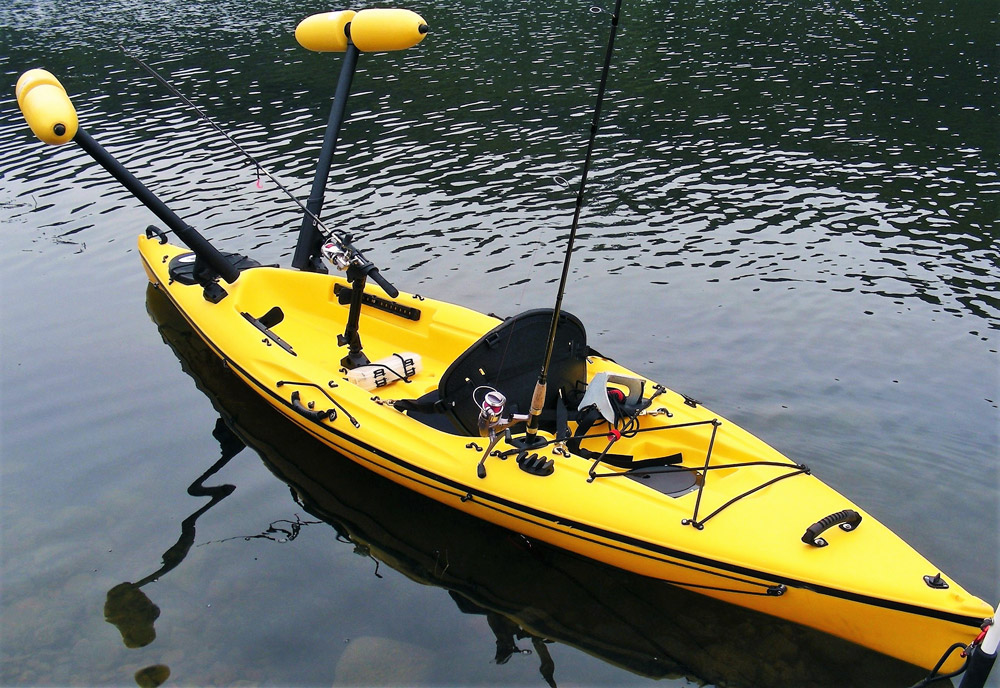
Navigating Waters: A Comprehensive Guide to Choosing the Right Fishing Kayak
The process of fishing, an ancient yet dynamic practice, has witnessed countless adaptations over the centuries. Today, kayak fishing stands out as a highly rewarding and accessible adaptation. From reeling in your first catch to mastering the challenge of battling a big fish from a small vessel, the adventure kayak fishing offers is unparalleled. However, this thrilling experience begins with one crucial step: choosing the right fishing kayak.
Anchoring the Basics: Why the Right Fishing Kayak Matters
The importance of selecting the appropriate kayak cannot be overstated. The difference between a successful day on the water and a frustrating one often boils down to this singular choice. Much like how seasoned chef values their choice of the knife, fishing enthusiast understands that a kayak isn’t just a tool; it’s an extension of themselves. It must cater to your individual needs, fishing style, and the environment in which you’ll be fishing.
Imagine settling into a kayak that doesn’t provide the stability you need, resulting in a constant struggle to maintain balance rather than focusing on the sport itself. Or consider a scenario where the kayak lacks adequate storage for your fishing gear, leading to a chaotic and inefficient fishing experience. It’s not hard to see how the wrong kayak can dampen the spirit of your adventure.
Selecting the right kayak, conversely, amplifies the joys of fishing. A kayak with the right stability and comfort turns into a reliable platform for fishing, whether you’re navigating quiet lakes or tackling choppy sea waves. The right size and weight can make maneuverability a breeze, while ample storage ensures that your necessary gear is always within arm’s reach. If you invest wisely, your fishing kayak becomes a personal haven, a perfect marriage of your fishing style and the challenging whims of the water.
🔶The impact of the right kayak on your fishing experience is, therefore, monumental. The choice of a fishing kayak shapes your interactions with the water and fish, making it a pivot point around which your fishing journey revolves. A suitable fishing kayak doesn’t just carry you over water; it carries your aspirations and adventure, transforming a day of fishing into an unforgettable experience.
Sailing Through History: Unraveling the Origins of Kayak Fishing
Kayak fishing, as the name implies, is the activity of fishing from a kayak. This fusion of fishing and kayaking takes the angler off the shore, docks, or fishing boats, and situates them directly on the water’s surface, offering a more intimate and immersive fishing experience.
The history of kayak fishing can be traced back thousands of years to the indigenous people of the Arctic, specifically the Inuit, Yup’ik, and Aleut tribes. They crafted kayaks—traditionally known as “kayaks”—from driftwood or whalebone and covered them with sealskin. These original kayaks were nimble, sturdy, and stealthy, providing the perfect vessel for hunting on inland lakes, rivers, and coastal waters.
Over time, the kayak evolved and migrated across cultures and continents, and so did its use in fishing. By the mid-20th century, the advent of plastic and fiberglass materials led to the mass production of more durable and affordable kayaks. This accessibility and the growing popularity of recreational fishing saw the birth of modern kayak fishing.
🔶The past few decades have seen a surge in kayak fishing’s popularity, with manufacturers innovating designs specifically for anglers. Today’s fishing kayaks are replete with features such as rod holders, tackle storage compartments, fish finders, and live wells, reflecting the evolution of this age-old practice into a modern-day sport.
Reeling in the Benefits: The Upsides of Kayak Fishing
Kayak fishing, an exciting blend of tranquility and thrill, offers numerous benefits that extend beyond the sheer joy of making a catch:
| Benefits of Kayak Fishing | Explanation | |
|---|---|---|
| 1. | Health Benefits | Kayak fishing is a full-body workout that engages your core, back, arms, and even legs in some kayak models. It not only improves cardiovascular fitness and flexibility but also promotes mental well-being by reducing stress. This is because the concentration required for fishing helps you engage your mind fully in the activity. |
| 2. | Accessibility and Affordability | Kayaks are generally more affordable than motorized fishing boats, making them more accessible to a larger number of people. They also offer access to fishing spots that larger boats can’t reach, including shallow, weedy areas or narrow, secluded sections of a river. This versatility provides you with a greater variety of fishing opportunities. |
| 3. | Environmentally Friendly | Kayaks, especially those powered by paddles or pedals, are environmentally friendly. They do not release harmful emissions and their quiet operation doesn’t disturb aquatic life. This maintains the tranquility of your surroundings and minimizes your impact on the environment. |
| 4. | Enhanced Fishing Experience | The low-profile and silent approach of a kayak allows you to get closer to fish without scaring them away. This increases your chances of a successful fishing experience. Furthermore, the level at which you are fishing from a kayak offers a thrilling, intimate connection to the battle between you and the fish. |
🔶The evolution of kayak fishing from a survival necessity to a celebrated sport illustrates its captivating appeal. Its health benefits, accessibility, affordability, and unparalleled fishing experience it offers, make it a compelling option for both novice and seasoned anglers alike. It’s no wonder that more people are swapping the shore for a seat in a fishing kayak.
The Angler’s Arsenal: A Breakdown of the Different Types of Fishing Kayaks
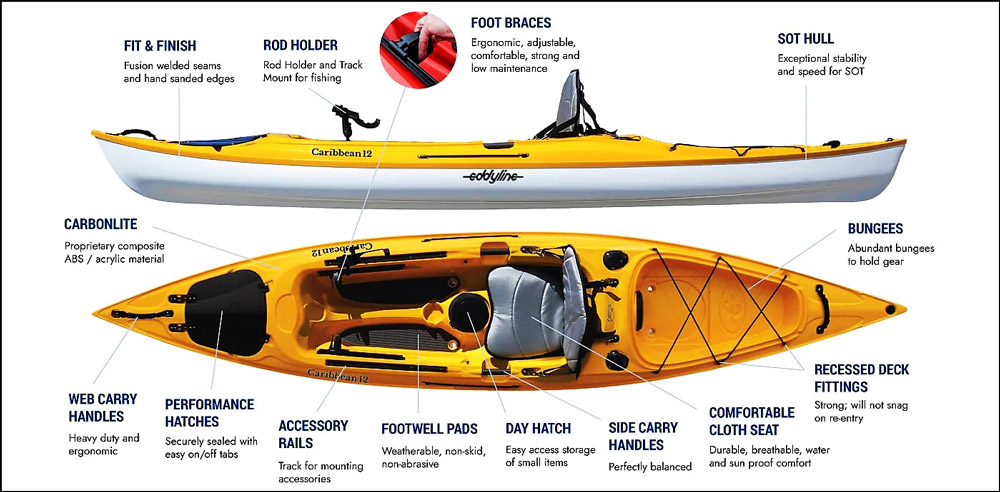
Enjoying the View: Advantages and Disadvantages of Sit-On-Top Kayaks
Sit-On-Top Kayaks (SOTs) is a popular choice for many anglers. As the name suggests, the seating area is on top of the kayak rather than inside a cockpit. This design offers several advantages, the primary being stability. The flat-bottom design generally makes SOTs extremely stable, which is crucial when angling.
SOTs are also easy to enter and exit, which is advantageous if you fancy a quick swim or need to wade in shallow waters. The open layout provides ample space for gear and the ability to move around more freely, enhancing comfort during long fishing expeditions. Additionally, they are self-bailing, as they have scupper holes that allow water to drain out.
However, the very design that provides these advantages also leads to a few downsides. For instance, you’re more exposed to the elements and can get wet more easily, which might not be ideal in colder climates. Also, SOTs are usually heavier and can be less efficient to paddle over long distances compared to their sit-in counterparts.
Immersed in the Experience: Pros and Cons of Sit-In Kayaks
Sit-In Kayaks (SIKs) offers a more traditional design where the paddler sits inside a cockpit. One of the primary benefits of SIKs is the ability to stay drier, making them more suitable for cooler weather. SIKs typically have a lower center of gravity, which can make them feel more stable, especially when paddling in rougher conditions.
For anglers who prefer long-distance journeys, SIKs are usually more efficient to paddle and offer good speed. They also provide the ability to use a spray skirt, which can further protect you from the elements.
🔶However, the enclosed design means less room to move around and less space for gear. Entering and exiting a SIK can also be a bit more challenging compared to a SOT, particularly in deep water. The inability to self-bail means you’ll need to pump out any water that splashes into the cockpit.
Power Paddling: Exploring the Realm of Pedal and Motor-Powered Kayaks
Pedal and motor-powered kayaks offer the benefit of hands-free movement. This can be a significant advantage for anglers, allowing them to focus more on fishing while moving around:
🐳Pedal-powered kayaks are becoming increasingly popular. These systems provide excellent maneuverability and leave your hands free for casting and reeling. However, they can be more expensive and usually heavier than traditional paddle kayaks. They also can be less effective in shallow waters where the pedal drive might hit the bottom.
🐟Motor-powered kayaks, typically equipped with an electric motor, offer greater speed and require less effort to move around, especially over longer distances. This can be beneficial for those who prioritize fishing over the physical activity of paddling. However, they come with higher costs and can be heavier to transport. There may also be restrictions on the use of motorized vessels in certain fishing locations.
Compact Convenience: Weighing the Merits of Inflatable and Folding Kayaks
🌊Inflatable and folding kayaks offer excellent solutions for anglers who have limited storage space or wish to travel with their kayak. Inflatable kayaks are easy to store and transport and are usually lighter than hardshell kayaks. Modern designs are surprisingly durable and stable. However, they can be more prone to punctures, and their performance in the water may not match that of a hardshell kayak.
🌊Folding kayaks, on the other hand, offer the convenience of compact storage and transport, with performance closer to that of a hardshell. They can be assembled and disassembled relatively quickly. However, they tend to be more expensive, and the folding mechanisms may require maintenance to ensure longevity.
🔶Choosing the right fishing kayak involves carefully considering these types, each with its own set of benefits and drawbacks, to find one that best suits your fishing style, location, and personal preferences.
Unlocking the Secrets: Discover the Key Features of the Ideal Fishing Kayak
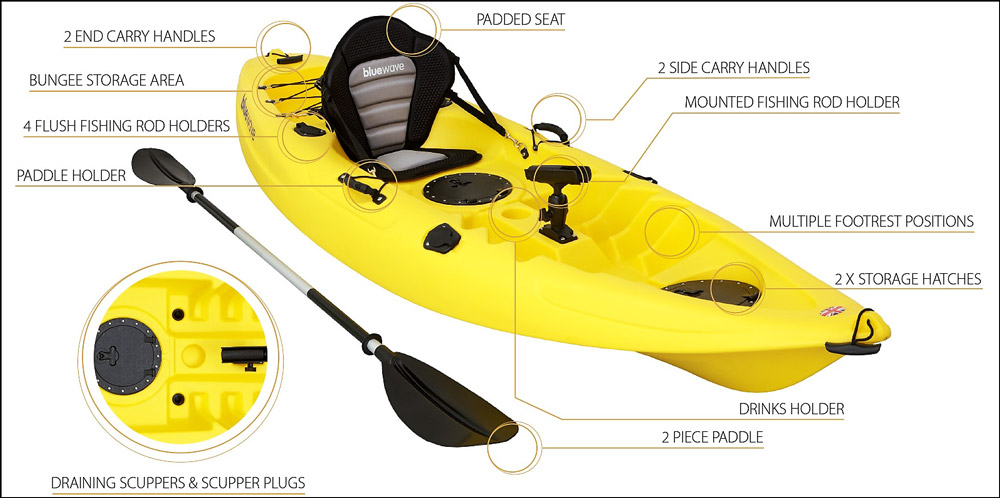
Size and Weight: Balancing Your Needs and Capabilities
When choosing a fishing kayak, size and weight are critical factors. The length and width of the kayak significantly influence its performance on the water. A longer kayak will generally track better (stay on a straight path) and move faster, while a wider kayak will offer more stability, crucial when angling. However, a larger kayak may be more difficult to transport and store, so you must consider your capabilities and constraints.
The kayak’s weight also plays an important role in its transport and maneuverability. A lighter kayak is easier to carry and load onto a vehicle, but it may be more affected by wind and currents on the water. Conversely, a heavier kayak may be more stable on water but might require additional equipment (like a kayak cart) for transport.
Storage and Gear Compatibility: Planning for Your Fishing Expedition
A fishing kayak needs to have ample storage for gear. Look for options like storage hatches, bungee cord systems, and dedicated spaces for fishing rods and tackle boxes. Some kayaks even come with built-in coolers for your catch. The availability and configuration of these features can significantly impact your fishing experience, as convenient access to gear allows for a smoother and more efficient outing.
Gear compatibility also includes mounting options for additional equipment like fish finders, GPS units, and anchor systems. Check if the kayak has built-in track systems or mounting points for such accessories.
Stability and Comfort: Ensuring a Pleasant Kayaking Experience
The stability of a kayak is vital for fishing, especially if you plan to stand while casting and reeling. Wider kayaks and those with pontoon-like hulls offer greater stability. Some kayaks also have outriggers to improve balance.
Comfort is another paramount aspect. Look for kayaks with adjustable padded seats and footrests. If you plan to fish for extended periods, a comfortable seating position can make all the difference. Also, consider the ease of entry and exit from the kayak, especially if you plan to venture into deep waters.
Cost and Value: Investing Wisely in Your Fishing Adventure
Kayaks vary significantly in cost, depending on their design, material, and features. While it might be tempting to opt for a lower-priced kayak, remember that a fishing kayak is an investment. Consider the kayak’s durability and how well it fits your specific needs.
Higher-priced kayaks often offer better durability, more features, and superior performance on the water. However, it’s essential to balance these aspects with your budget. Look for a kayak that offers the best value for your money—a good mix of cost, durability, and features that align with your fishing style and requirements. It’s better to invest in a higher-quality kayak that meets your needs than to save a few dollars on one that doesn’t.
How to Match a Kayak to Your Fishing Style and Environment
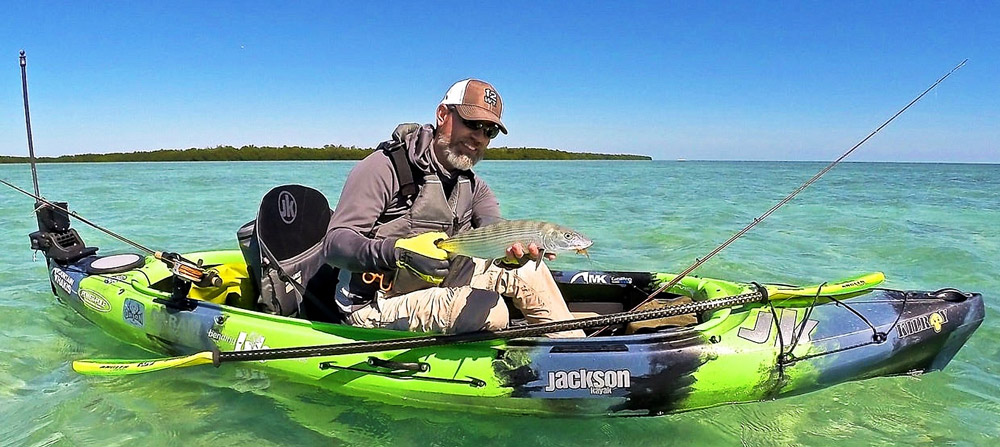
The Gentle Waves: Kayaking in Freshwater Environments
Freshwater environments like lakes, ponds, and rivers require kayaks that can handle a variety of conditions. In these environments, maneuverability and stability are crucial.
💦For lakes and ponds, where the water is typically calmer, you can opt for either sit-on-top or sit-in kayaks depending on your preference. Longer kayaks will offer better tracking, making it easier to cover longer distances, especially on larger lakes. A wider kayak will give you more stability, which is beneficial when fishing.
Rivers, on the other hand, can vary from calm to quite rapid, so you need a kayak that’s highly maneuverable. Shorter kayaks, typically, are more responsive and easier to control in moving water. An added benefit of sit-on-top kayaks in rivers is their self-draining ability through scupper holes, which is handy in case of splashes from rapid waters.
Riding the Tides: Kayaking in Saltwater Environments
🐋Saltwater fishing is a whole different ballgame. Coastal fishing usually involves larger waves and stronger winds, requiring a kayak that’s stable and able to handle choppy water. Longer kayaks with a V-shaped hull will perform better in these conditions as they cut through waves and track straighter even with crosswinds.
For offshore fishing, you’ll need a kayak that’s not only stable and capable in rough water but also has ample storage for gear and catches. Sit-on-top kayaks are generally favored for saltwater fishing due to their superior stability and self-draining ability. Pedal-powered kayaks can be particularly useful in saltwater environments, as they leave your hands free to handle fishing gear and keep you on the spot even in currents.
The Art of the Cast: Kayaking for Fly Fishing
💠Fly fishing from a kayak presents unique challenges. It requires more casting room and precise control over the kayak’s position. Also, you’ll need a stable platform, as fly fishing often involves standing up when casting.
A wide, stable sit-on-top kayak is typically an excellent choice for fly fishing. Look for kayaks with a flat, non-slip deck to allow for safe and comfortable standing. A stable kayak will also make it easier to cast and retrieve without tipping over.
Pedal-powered kayaks can be an excellent choice for fly fishing. The hands-free operation allows you to maintain your position and control the kayak’s orientation, all while keeping your hands free for casting and reeling.
🔶Remember, the best kayak for you ultimately depends on your specific needs, fishing style, and the environments you plan to fish in. Take the time to consider all these factors to find a kayak that will enhance your fishing experience.
Top Brands and Models for Fishing Kayaks: Making Your Choice

Old Town Canoes and Kayaks: Old Town Predator PDL
Old Town is one of the most respected names in the world of kayaking. Their Predator PDL model is a top-of-the-line fishing kayak, designed for maximum stability and equipped with a pedal drive system that allows for hands-free fishing. It features an exceptionally comfortable seat, multiple fishing rod holders, and ample storage for all your gear. Its well-designed hull offers excellent tracking and maneuverability in all types of water.
Hobie: Mirage Pro Angler 12
Hobie has long been a pioneer in the field of pedal-powered kayaks. The Mirage Pro Angler 12 is one of their best offerings for fishing enthusiasts. This sit-on-top kayak comes with the Mirage Drive 180 pedal system, enabling forward and reverse movement. Its features include a rotating chair, retractable skeg for improved tracking, multiple rod holders, and a lot of storage space, making it one of the most complete fishing kayaks on the market.
🎦Hobie Mirage Pro Angler 12 on the Water Video
Vibe Kayaks: Sea Ghost 130
Vibe Kayaks’ Sea Ghost 130 is a budget-friendly option that doesn’t compromise on features. This 13-foot kayak offers excellent stability and performance in various waters. It comes with a comfortable, adjustable hero seat, large front and rear hatches for gear storage, integrated gear tracks for custom rigging, and a rudder system for better control of wind and currents.
Wilderness Systems: ATAK 120
Wilderness Systems’ ATAK 120 is a highly customizable fishing kayak. Its open deck allows for plenty of movement and is designed to accommodate many accessories with its SlideTrax rail system. The kayak’s AirPro MAX seat is adjustable and provides great comfort for long fishing expeditions. With a well-designed hull for superior tracking and stability, the ATAK 120 is a reliable companion for any fishing trip.
Jackson Kayak: Coosa FD
Designed by professional kayak angler Drew Gregory, the Coosa FD from Jackson Kayak is a superb fishing machine. It has a pedal drive system for hands-free fishing, allowing anglers to focus more on their catch. The Coosa FD is exceptionally stable, making it suitable for standing and fly fishing. It has a high seating position for better visibility and comfort, and multiple storage options to secure all your gear.
Perception Kayaks: Pescador Pro 12.0
Perception Kayaks’ Pescador Pro 12.0 offers great value for its price. It features a removable stadium-style seat with two seating positions, adjustable footrests, and plenty of storage, including a large front and rear open storage and multiple fishing gear tracks. It’s a sturdy and comfortable kayak that’s great for both beginners and experienced anglers.
These are just a few of the top-rated fishing kayaks available in the market. When choosing a model, remember to consider your fishing style, favorite fishing environments, and the specific features you need. Always prioritize your comfort and safety, and don’t forget to have fun out there on the water!
Flip-Kat™ by Noisy River Outdoors

The Flip-Kat™ is not just a compact fishing kayak, but a complete fishing system that caters to both seasoned anglers and beginners alike. It promises an unbeatable fishing experience, combining innovative design, state-of-the-art materials, and top-tier craftsmanship.
🎦The Flip-Kat by Noisy River Outdoors Video
It boasts a robust, rotomolded polyethylene body that ensures durability and resistance against wear and tear, while still maintaining a lightweight profile for easy maneuverability. It comes with a distinctive streamlined hull design for fast, smooth, and stable rides. It’s wide beam and flat bottom deliver superior stability, making it an excellent platform for standing and casting.
It features an ergonomic, adjustable, and padded seat with a high backrest to offer unmatched support during long fishing trips. A cockpit design that’s spacious yet secure, allows easy in-and-out access and gives you plenty of room to move around without feeling cramped.
It has large, sealed front and rear storage hatches for personal items and fishing gear, and a sizable tank well with bungee cords for cooler or tackle box. In addition, it comes with built-in rod holders, gear tracks for additional customization, and a dedicated space for a tackle box.

The Flip-Kat™ introduces a versatile propulsion system, allowing anglers to switch effortlessly between traditional paddling, pedal drive, and even a motor attachment (sold separately), providing flexibility based on your fishing needs and conditions.
Despite its ample size and features, is incredibly portable. It comes with robust carry handles for easy transport and a wheel in the keel design to simplify moving the kayak from your vehicle to the water.
🔶It includes reflective safety lines for visibility, a paddle holder to secure your paddle when not in use, and scupper holes for quick and effective water drainage.
Prolong the Adventure: Maintaining Your Fishing Kayak for Endless Expeditions
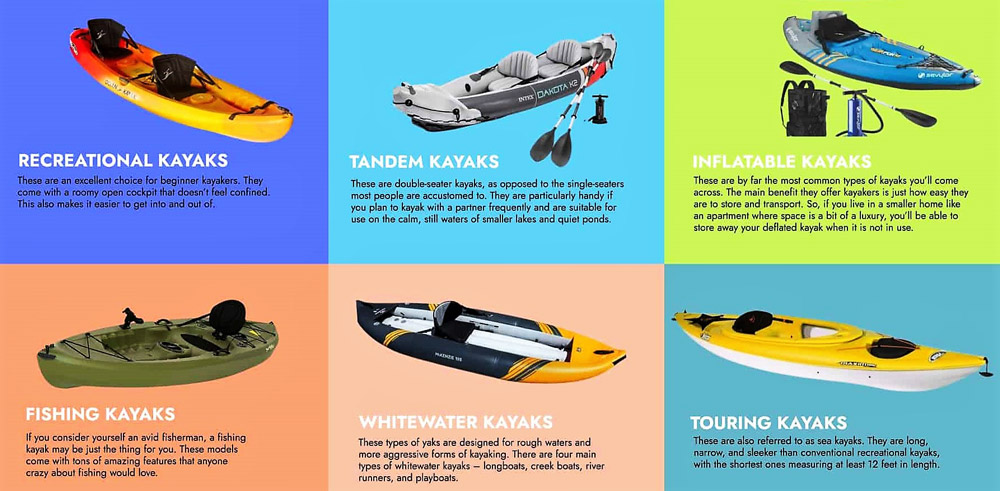
Taking care of your fishing kayak is essential not just for maintaining its appearance but also for ensuring its longevity and performance. Proper maintenance can prevent unnecessary wear and tear, safeguarding your investment for many years of enjoyable use. Here are some basic tips to keep your fishing kayak in the best shape:
Cleaning: Rinse and Clean Regularly
After every trip, especially in saltwater environments, rinse your kayak thoroughly with fresh water. Saltwater can corrode certain materials over time, so it’s crucial to wash it off. Use a mild detergent and a soft sponge or cloth to clean the kayak. Avoid harsh cleaning products as they can damage the kayak’s finish.
Storage: Keep it Cool and Covered
When storing your kayak, keep it out of direct sunlight. UV rays can cause damage to the kayak material, leading to discoloration and brittleness over time. Use a kayak cover to protect it from dust, rain, and UV rays. When possible, store the kayak indoors or in a shaded, dry place.
Position: Store Right to Prevent Deformities
Kayaks should ideally be stored on their side or upside down to prevent hull deformation. If you’re using a rack, make sure the weight of the kayak is evenly distributed. Avoid placing it on hard surfaces for extended periods, as this could cause dents or deformations.
Check and Repair: Regularly Inspect Your Kayak
Regularly inspect your kayak for any signs of damage. Look for cracks, punctures, or abrasions. If you notice any damage, repair it as soon as possible to prevent it from getting worse. For minor scratches or cracks, a repair kit may be sufficient. However, for more serious damage, you might need professional help.
Protect: Use Protectants
Apply a UV protectant spray to the kayak’s surface periodically. This will help shield the material from the sun’s harmful rays and keep the colors vibrant. Ensure that the spray is suitable for the kayak material to avoid any adverse reactions.
Keep it Dry: Drain and Dry Before Storage
After cleaning your kayak, make sure to drain any water from the hull and let it dry before storing it. This helps prevent the growth of mold or mildew.
🔶Remember, a well-maintained kayak not only looks good but also performs better and lasts longer. With these basic maintenance tips, you can enjoy countless fishing adventures with your trusted kayak.
Basic Kayak Fishing Techniques: Ensuring a Smooth Sailing Fishing Experience
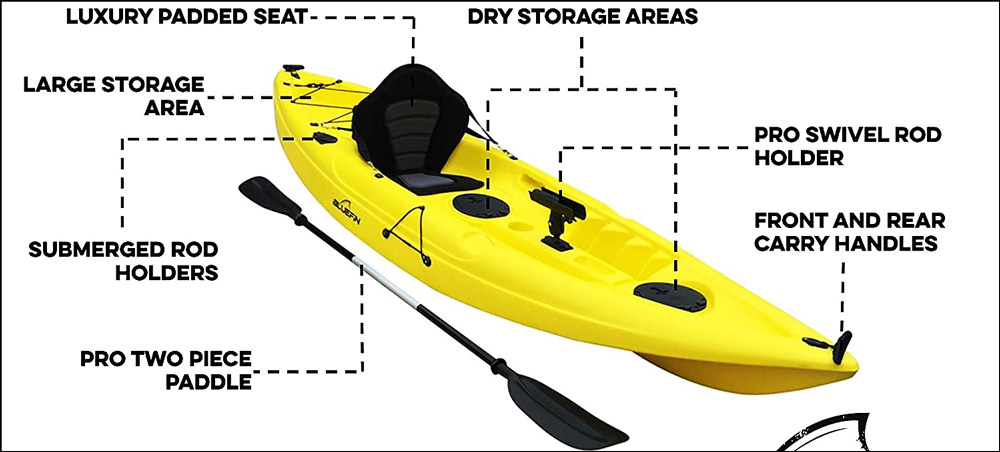
Kayak fishing is an exhilarating activity that combines the excitement of catching fish with the peaceful tranquility of being on the water. However, it requires a unique set of skills compared to traditional fishing. Below, we’ll discuss basic kayak fishing techniques, focusing on maintaining stability, and address common concerns about potential encounters with aquatic wildlife.
How to Fish Properly so as Not to Roll Over in a Kayak
| Tips for Maintaining Balance in a Fishing Kayak | Explanation | |
|---|---|---|
| 1. | Maintaining Balance | Always hold onto the sides of the kayak while getting in or out to maintain balance. Once on the water, keep your body’s center of gravity as low as possible. Avoid making sudden movements or shifts in weight, especially while casting or reeling in fish, to prevent the kayak from tipping over. |
| 2. | Proper Seating and Posture | Sit upright and centered in the kayak, which helps keep the kayak balanced. Standing up for a better view can make the kayak more likely to tip over, so it’s recommended to remain seated while fishing. |
| 3. | Use of Paddle and Rod | Utilize your paddle to stabilize the kayak if needed. While fishing, keep your rod pointed toward the water to minimize the chances of tipping if a fish pulls hard on your line. |
| 4. | Positioning the Kayak | Always face the direction of the waves while fishing. This approach allows the kayak to ride the waves rather than being hit broadside, which can cause it to tip over. Understanding and adapting to the water conditions can significantly improve your kayak’s stability. |
Interactions with Aquatic Wildlife
While there are rare stories of encounters with sharks and whales, it’s important to remember that these incidents are extremely uncommon. Here are some points to consider:
- Sharks: Sharks typically avoid kayaks. They are generally more interested in natural prey and are likely to ignore a kayak unless provoked. It is extremely rare for a shark to bite into a kayak and flip it over.
- Whales: Whales are generally gentle giants. They are not typically a danger to kayakers unless startled or threatened. Accidental capsizes can occur if a large whale surfaces under a kayak, but this is extremely rare.
Always remember to respect wildlife and maintain a safe distance when you encounter them. Not only is this safer for you, but it’s also better for the animals. Most importantly, always wear a life jacket and know what to do in case of a capsize. Stay calm, hold on to your kayak, and if possible, re-enter from the side by kicking your legs up and sliding back onto the kayak from the water.
Outfitting for Adventure: The Key Equipment You Can’t Miss in Kayak Fishing

A table that details the equipment you will need for kayak fishing:
| Equipment | Description |
|---|---|
| Fishing Kayak | The primary piece of equipment. A stable, comfortable fishing kayak with enough storage for your gear is essential. |
| Paddle/Pedal system | This is your propulsion system. Some kayaks use traditional paddles, while others employ pedal systems or even motors. |
| Personal Floatation Device (PFD) | Also known as a life vest, this is crucial for safety. Some are designed specifically for kayak fishing, with pockets and features for gear storage. |
| Fishing Rods & Reels | The type of rod and reel will depend on the type of fishing you are doing (e.g., fly fishing, saltwater fishing, freshwater fishing). |
| Tackle Box | Contains your fishing gear: lures, hooks, line, sinkers, and any other equipment you may need for the specific fish species you’re targeting. |
| Kayak Cart | A cart makes it easier to transport your kayak from your vehicle to the water’s edge. |
| Kayak Anchor | An anchor is used to hold the kayak in place, especially in current or wind. |
| Rod Holders | These secure your fishing rods while you paddle or when you have multiple lines in the water. |
| Paddle Leash | A leash prevents your paddle from drifting away if you let go of it. |
| Dry Bags | Useful for keeping valuables and electronics dry while you’re on the water. |
| First Aid Kit | A must-have for safety. Should include bandages, antiseptic wipes, tweezers, medical tape, and other emergency supplies. |
| Fish Finder | While not strictly necessary, a fish finder can greatly enhance your fishing success by showing you where the fish are. |
| Safety Whistle and Lights | Necessary for safety, especially if you’re out on the water early in the morning or in the evening when visibility may be reduced. |
| Bilge Pump/Sponge | Helps remove any water that may have gotten into the kayak. |
| Knife/Line Cutters | Useful for cutting line, opening packages, and other miscellaneous tasks. |
| Sunscreen & Hat | Protects you from sun exposure during your trip. |
| Water & Snacks | Essential for staying hydrated and energized during your trip. |
Fish Like a Pro: Discover Why a Special Fishing Rod is a Must for Kayak Fishing
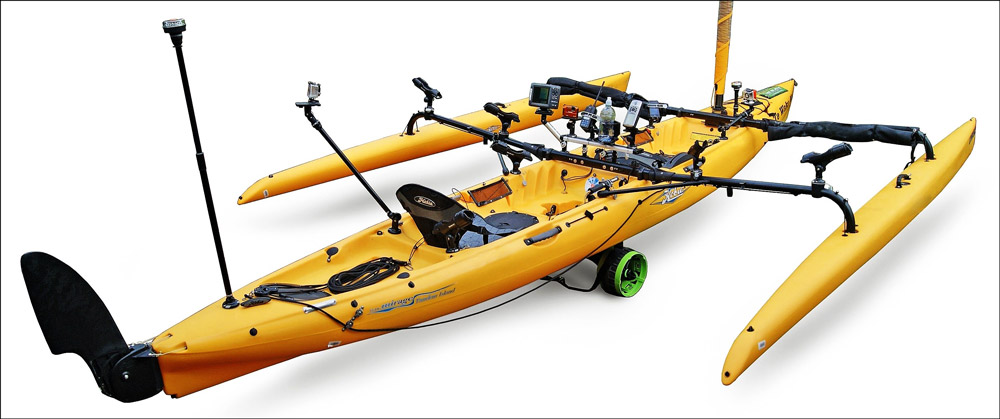
Kayak fishing requires a specific approach and setup compared to traditional fishing due to the distinctive nature of the sport. The kayak’s limited space and proximity to the water can impact the gear you use, particularly the fishing rod. Here’s why you need a special fishing rod for kayak fishing:
| Consideration | Explanation |
|---|---|
| Space Constraints | Kayaks have limited space, making a shorter rod more maneuverable and less likely to get tangled with gear or the kayak itself. |
| Rod Power and Action | Kayak fishing often happens in structured areas like rocky bottoms, reefs, or fallen trees. Higher power and faster action rods may be needed for pulling fish away from structures and for quicker, precise casting. |
| Sensitivity | Being closer to the action in a kayak can benefit from a rod with high sensitivity, allowing the angler to feel the slightest nibble or tug, and respond more quickly. |
| Rod Holders and Mounts | Many fishing kayaks have built-in rod holders, or you might add your own. Some fishing rods are designed to fit these holders, making them easier to secure on the kayak. |
| Versatility | In kayak fishing, you may target different fish species in various environments. A versatile rod, possibly allowing you to switch between baitcasting and spinning setups or adjust the rod’s length, can be beneficial. |
| Durability | Kayak fishing can be tough on gear. Fishing rods for kayak fishing are typically designed to withstand these conditions with durable materials and construction. |
🔶While it’s not strictly necessary to have a specific rod for kayak fishing, it can certainly enhance your experience and success rate. It can provide better control, convenience, and performance that align with the unique challenges and rewards of kayak fishing.
Transportation: Simplifying the Process with a Kayak Cart
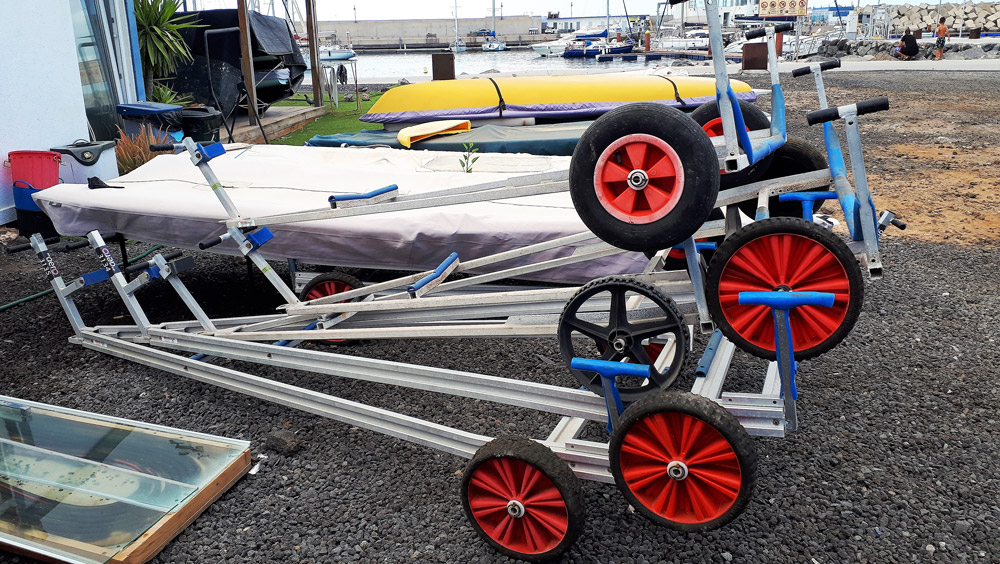
Transporting your fishing kayak from your vehicle to the water’s edge can be one of the most challenging aspects of kayak fishing, especially if your kayak is heavy or you’re fishing alone. That’s where a kayak cart, also known as a kayak trolley or dolly, comes in.
What is a Kayak Cart?
A kayak cart is a simple device designed to make transporting your kayak easier. It’s essentially a small, two-wheeled cart that cradles the kayak and allows you to pull or push it over various terrains, such as sand, gravel, and grass.
Most kayak carts are made from durable materials like steel or aluminum, with inflatable or rubber wheels that can handle rough surfaces. They often feature a padded or indented area where the kayak hull rests to prevent damage.
How to Transport a Fishing Kayak on a Cart
Transporting a fishing kayak on a cart involves several steps:
| Step | Explanation |
|---|---|
| Load the Kayak | Position the cart approximately in the middle of the kayak’s hull for optimal balance. Lift or tilt the kayak onto the cart, ensuring that it’s secure and well-balanced. |
| Secure the Kayak | Many carts come with straps to secure the kayak. Wrap these around the kayak and tighten them, ensuring the kayak is securely fastened and won’t move during transport. |
| Pull or Push the Cart | Once the kayak is secured, you can pull or push the cart to your desired location. It’s generally easier to pull the cart behind you, but on certain terrains or inclines, you might find pushing easier. |
| Unload the Kayak | When you reach the water’s edge, carefully undo the straps and slide or lift the kayak off the cart. Store the cart in a safe location or fold it up and stow it in the kayak if it’s collapsible. |
A kayak cart is an essential piece of equipment for any kayak fisher. It makes the task of moving your kayak simpler and less physically demanding, leaving you with more energy to enjoy your time on the water.
Stay in Control, Stay Safe: Expert Advice for a Secure Kayak Fishing Trip
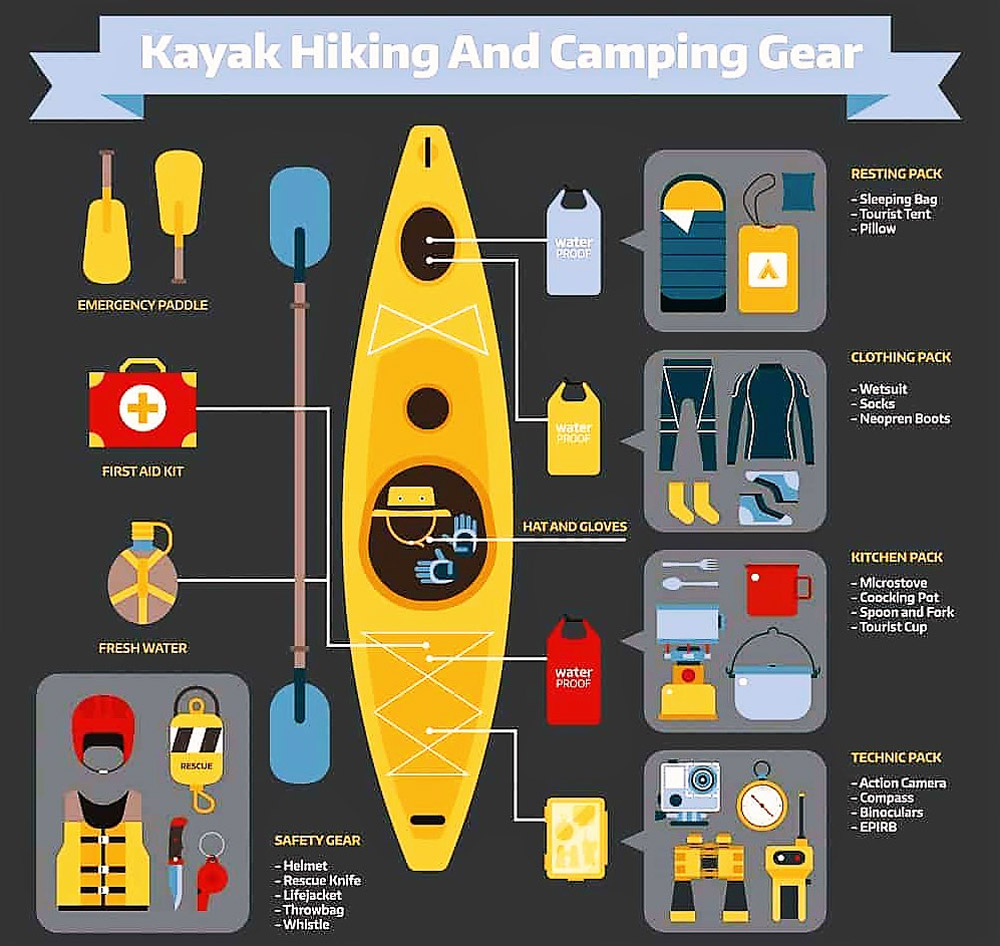
Safety in kayak fishing is a critical consideration, ensuring a positive and secure experience on the water. Below are the key factors concerning safety in kayak fishing and the type of life jacket or life vest recommended for kayak fishing.
Safety in Kayak Fishing
In kayak fishing, safety comes in many forms. Here are a few aspects to consider:
| Consideration | Explanation |
|---|---|
| Knowledge and Skills | Being knowledgeable about the sport is crucial. This includes knowing how to operate your kayak, fish safely, be aware of the local marine life, understand local weather and water conditions, and how to self-rescue in case of capsizing. |
| Weather and Water Conditions | Check the weather forecast and understand the water conditions before heading out. High winds, fast currents, and extreme temperatures can be dangerous. |
| Proper Gear | Wearing appropriate gear can protect you from various elements. This includes sun protection, carrying a first aid kit, and always wearing a life jacket or PFD (Personal Flotation Device). |
| Communication | Always let someone know your fishing plan, including where you’re going and when you expect to return. Carry a waterproof VHF radio or a fully charged cell phone in a waterproof case for emergencies. |
| Navigation | Be aware of marine traffic and understand the ‘rules of the road’ on the water. Carry navigational aids like a compass or GPS. |
Life Jacket or PFD for Kayak Fishing
When it comes to choosing a life jacket or PFD (Personal Flotation Device) for kayak fishing, consider the following:
| Consideration | Explanation |
|---|---|
| Fit | The life jacket should fit snugly but still allow full mobility for paddling and fishing. |
| Buoyancy | The life jacket should have sufficient buoyancy to keep you afloat. This often depends on your body weight and the weight of your gear. |
| Visibility | Brightly colored or reflective life jackets can make you more visible in the water, which is especially important if you’re in a high-traffic area. |
| Comfort | Consider a life jacket designed specifically for kayak fishing. These models typically have features like wider arm openings for better paddle motion and mesh lower backs that are more comfortable when seated against a kayak seat. |
| Storage | Some life jackets designed for kayak fishing also include pockets or attachment points for gear like pliers, whistles, or VHF radios. |
Remember, the most important thing about a life jacket is that you wear it. It can’t save your life if it’s stowed away in your kayak. Choose a life jacket you find comfortable and practical so you won’t be tempted to take it off while you’re out on the water.
Detailed Review of the First Aid Kit for the Fishing Kayak
Ensuring safety during kayak fishing or any water-related activities is paramount. One such measure is having a comprehensive first aid kit onboard your kayak. In this review, we’ll take a close look at a particular First Aid Kit designed for use on a fishing kayak, evaluating its contents, design, and overall usefulness.
The First Aid Kit under review comes packed with an array of essential medical supplies. These include adhesive bandages of various sizes, gauze pads, antiseptic wipes, tweezers, medical tape, gloves, a CPR face mask, and a basic first-aid manual. This selection covers the common injuries you might encounter on a fishing trip such as cuts, scrapes, insect bites, and minor burns.
However, the kit lacks a few advanced items such as a tourniquet, splint, or any medication like painkillers or antihistamines. Including these would make the kit even more versatile and prepared for a wider range of emergency situations.
The design of this First Aid Kit is particularly impressive. It’s compact, making it easy to store in a kayak without taking up much space. It also features a bright red, waterproof case, ensuring the contents stay dry and secure, even in the event of a capsize. The case is sturdy, providing good protection for the supplies inside.
The kit is also well-organized, with clear compartments and labeling, allowing for quick and easy access to all the items in an emergency. One possible downside, though, is the zipper on the case, which may not be as durable as the rest of the case.
The usability of this First Aid Kit is high. It is lightweight and portable, which are crucial factors in a kayak where space and weight can affect stability and maneuverability. The waterproof feature is especially practical for the kayak environment, keeping all supplies safe and usable in the event of water exposure.
However, the lack of an attachment point or strap can make securing the kit to the kayak somewhat difficult, which could be a problem in rough water conditions.
This First Aid Kit is competitively priced, falling into the mid-range bracket, making it a suitable choice for casual and frequent anglers alike. Given the range of supplies it offers and its thoughtful, durable design, the kit presents good value for the price.
The First Aid Kit for the fishing kayak is a well-thought-out product that caters to the most basic medical needs that may arise during a fishing expedition. While it could benefit from a few additions in terms of contents and a more durable zipper, its waterproof case, compact size, and comprehensive basic supplies make it a worthy investment for any angler. Its reasonable price further adds to its appeal, making it a must-have safety item on any kayak fishing trip.
Mastering the Underwater: Harnessing the Power of Fish Finders
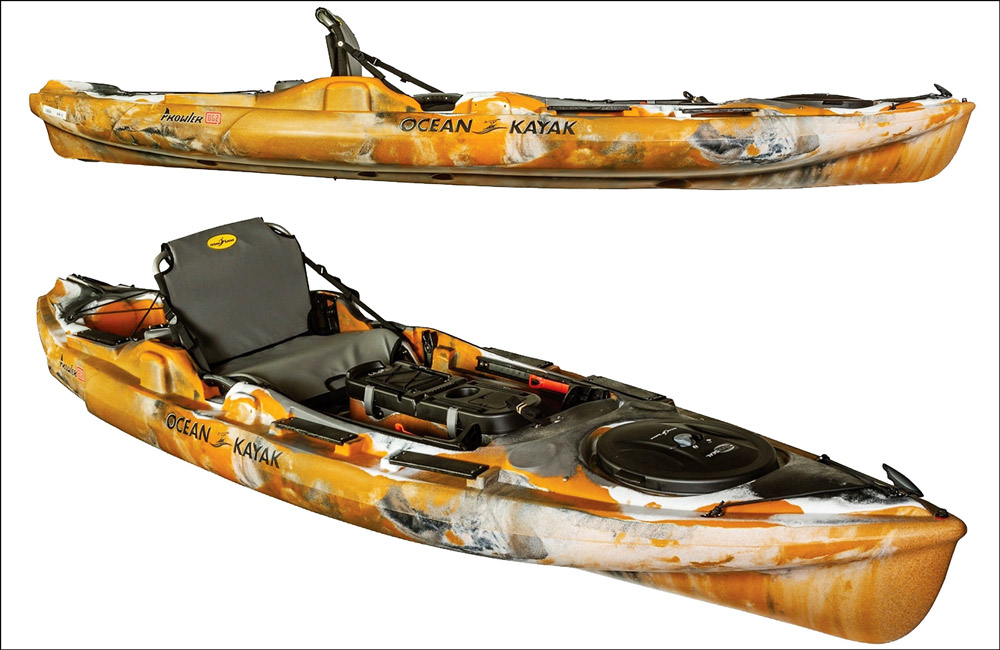
A fish finder is an excellent tool for anglers and can significantly enhance your fishing experience on a kayak. It’s a sonar device used to locate fish in the water by detecting reflected pulses of sound energy. Here’s a deeper look into fish finders for kayak fishing:
Fishing in the Digital Age: Making Sense of Fish Finders
Fish finders work by sending sound waves down through the water. When these waves hit an object, such as a fish, they bounce back to the device. The fish finder then interprets these echoes to create a picture of what’s underneath the water, allowing anglers to see where the fish are located. Fish finders provide valuable information such as depth, fish location, and structure that can help you increase your catch rate.
The Ultimate Fishing Tool: Exploring the Wonders of Fish Finders
| Consideration | Explanation |
|---|---|
| Screen Size and Resolution | A larger screen with high resolution provides clearer and more detailed images. It’s important to choose a screen size that fits well on your kayak and does not obstruct your fishing activities. |
| Frequency | Most fish finders operate on different frequencies. Higher frequencies (like 192 or 200 kHz) are better for fishing in shallow water, while lower frequencies (50 or 83 kHz) are better for deep water. |
| GPS Integration | Many modern fish finders come with integrated GPS, which can be extremely helpful in marking fishing hotspots, plotting your course, or navigating back to the shore or launch point. |
| Transducer | The transducer is part of the fish finder that sends out and receives the sonar waves. The cone angle of the transducer affects coverage area and detail; a wider cone angle gives a larger coverage area but less detail, while a narrower cone angle gives more detail but covers a smaller area. |
| Power | The more wattage a fish finder has, the faster it can display readings and the deeper its readings can go. If you’re fishing in shallow waters, lower wattage will suffice. |
| Portability | For kayak fishing, a portable fish finder is often a good choice. They’re easy to install and remove, and they can be moved from one boat to another. |
| Price | Fish finders vary greatly in cost, from less than $100 to over $1000. The price generally reflects the number of features, so consider what you need and what you’re willing to spend. |
Top Brands and Models for Kayak Fish Finders
There are many brands producing high-quality fish finders suitable for kayak fishing. Some of the top brands include Garmin, Humminbird, Lowrance, and Raymarine. Specific models to consider might be the Garmin Striker 4, the Humminbird HELIX 5, or the Lowrance HOOK2 4.
🔶In conclusion, a fish finder can be a great addition to your kayak fishing gear. It can not only help you find fish but also enhance your understanding of the underwater environment. As with any gear, the right fish finder for you depends on your specific needs, fishing style, and budget.
Review of the Personal Floatation Device (PFD) for the Fishing Kayak
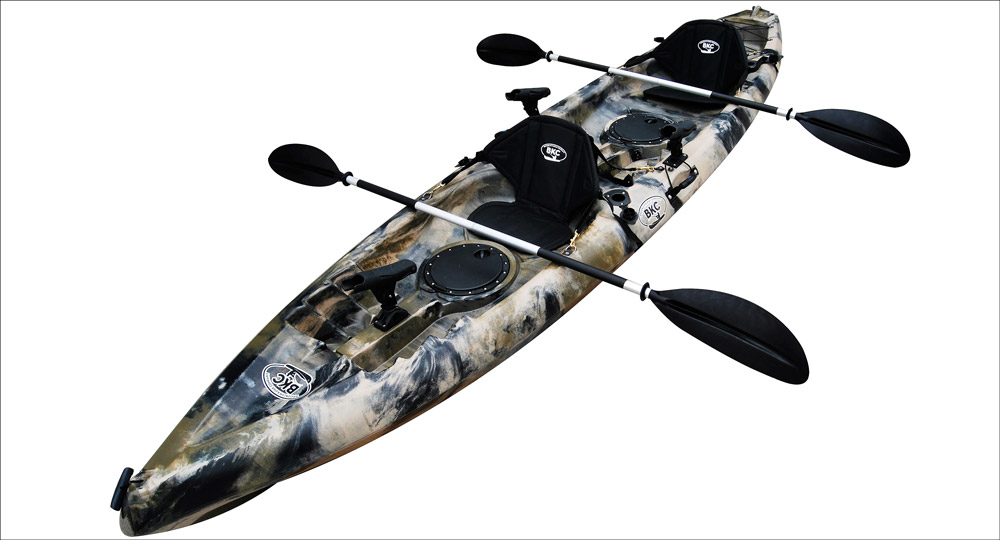
Personal Floatation Devices (PFDs), also commonly known as life vests, play a pivotal role in ensuring safety on the water. Especially in activities like kayak fishing, where balance and maneuverability often challenge the participants, PFDs can quite literally be lifesavers. This review aims to provide a comprehensive look at a specific PFD designed for kayak fishing, examining its strengths, weaknesses, and overall performance.
The PFD for the fishing kayak boasts a high-quality design that shows a thoughtful blend of aesthetics and functionality. The vest is adjustable with multiple straps, enabling users of various body sizes to attain a snug and secure fit. The cut-away shoulder design provides excellent mobility, a necessity when you’re casting lines or reeling in your catch.
Yet, despite these admirable qualities, some users might find the PFD somewhat bulky, potentially impeding the ease of their movements. Also, depending on the environmental conditions, the material may heat up quickly, leading to discomfort during longer trips, particularly in warmer climates.
On the safety front, this PFD delivers admirably. The inherent buoyancy of the vest is exceptional, capable of providing support even for heavier individuals. The robust material used is resistant to wear and tear, promising long-term durability. This PFD comes with bright color options too, enhancing visibility for added safety on the water.
However, the PFD lacks a whistle or other sound-producing devices that could be crucial in emergency situations. This could be an area for potential improvement.
One of the main attractions of this PFD is the ample storage it provides. The front pockets can comfortably fit tackle boxes, hooks, and even a compact first-aid kit. This convenience factor is crucial for anglers who want quick access to their gear without having to reach into the main body of the kayak.
The vest also has a rear mesh pocket that can accommodate a hydration pack. Furthermore, there is a lash tab to attach a knife or other tools, and D-rings to clip on additional gear. However, some users may find the pockets somewhat awkward to access when seated in the kayak.
The price of this PFD is somewhat higher than the market average for fishing vests. However, considering the comprehensive safety features, ample storage, and overall design quality, it offers solid value for money. This vest is a worthy investment for those who frequently partake in kayak fishing and prioritize safety and convenience on their trips.
Overall, the PFD for the fishing kayak scores high in safety, storage, and durability, with minor drawbacks in comfort and accessibility of pockets. It is a reliable and functional piece of safety equipment, and despite its somewhat higher price tag, the value it provides makes it an excellent choice for kayak fishing enthusiasts.
🔶Remember, no matter how good a swimmer you are, safety on the water should be the topmost priority. A well-fitted, quality PFD is more than a smart choice; it’s a necessity.
Comprehensive Review of the Fishing Kayak Anchor
An anchor can be an essential addition to a fishing kayak setup, especially for anglers who want to maintain their position in the water to focus on their casting. This review delves into the specifics of a particular fishing kayak anchor, assessing its effectiveness, quality, and overall value.
The Fishing Kayak Anchor reviewed here is compact and ingeniously designed. Its foldable flukes allow for easy storage, and the design enables a solid grip on the seafloor, riverbed, or lake bottom, ensuring your kayak stays put. It’s also lightweight and easy to handle, factors that are key in maintaining a well-balanced kayak.
However, the anchor does not come with a buoy, making it difficult to retrieve if it gets stuck. There might also be a bit of a learning curve in terms of deploying and retrieving the anchor smoothly, which could initially be a challenge for inexperienced users.
The anchor is made from galvanized iron, which provides it with good rust resistance and durability. This robust material ensures that the anchor can withstand the harsh aquatic environment and last for many fishing trips to come. However, like all galvanized products, some maintenance is required to ensure it doesn’t eventually rust, especially when frequently used in saltwater.
In terms of performance, the anchor excels. Its four-fluke design provides a firm hold in various bottom conditions, including sand, mud, gravel, and rock. It is designed for kayaks up to 14 feet, and it keeps them steady even in moderately windy conditions or stronger currents.
The anchor weighs 3.5 pounds, which is an ideal weight for fishing kayaks – heavy enough to secure the kayak but light enough not to affect the kayak’s stability and maneuverability. Some users might wish for a slightly heavier model for larger kayaks or for more turbulent conditions, though.
Considering the design, durability, and overall performance, this fishing kayak anchor offers excellent value for its price. It is affordable and lies within the mid-range price bracket, making it accessible for both casual and more devoted kayak fishing enthusiasts.
🔶Overall, the Fishing Kayak Anchor performs exceptionally well in terms of securing a kayak in various water and bottom conditions. The design and durability are commendable, although the lack of a buoy and the requirement for occasional maintenance could be seen as drawbacks. However, considering its price point and the value it offers, this anchor is a worthwhile investment for any angler who desires a more stable and controlled kayak fishing experience.
Net Your Way to Victory: Essential Tips for Successful Fishing
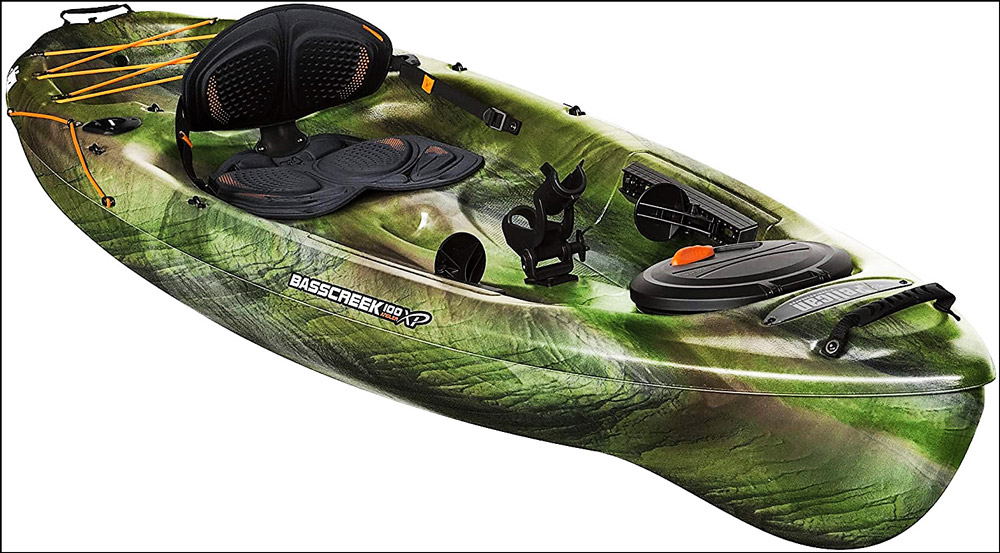
A fishing net is an essential piece of equipment for kayak anglers. Its main purpose is to assist in landing fish once they’re hooked, making it easier and safer to bring the fish onboard the kayak. Here are several reasons why using a fishing net is beneficial for kayak fishing:
- If you’re practicing catch and release, a fishing net can help reduce the stress and physical damage to the fish. Nets with rubber mesh are particularly gentle on the fish’s skin and scales.
- Trying to hand-land a fish, especially a larger or more energetic species, can lead to unexpected movements of the fish that might destabilize your kayak. A net allows you to control the fish’s movements more effectively.
- A net increases your chances of successfully landing a fish. Sometimes, a fish might unhook right next to the kayak, but if you have a net in the water ready, you can still secure your catch.
- Compared to a gaff, a fishing net is often easier to handle and less likely to injure the fish or the angler.
- Nets come in a variety of sizes and styles to match the type of fishing you’re doing. For example, a larger, deeper net might be ideal for larger fish species, while a smaller, shallower net could work well for smaller species or fly fishing.
- In some areas or for certain species, nets may be required by law for landing fish. Always check local regulations before heading out.
🔶When choosing a fishing net for kayak fishing, consider factors like the size of the fish you’re targeting, the space available on your kayak, and the type of net material. Nets with telescoping handles can be particularly useful on a kayak, as they offer extended reach when needed but can be compacted for storage. Always remember to use your net responsibly to minimize harm to the fish, especially if you plan on releasing your catch.
The Ultimate Weapon: Harnessing the Power of the Gaff in Kayak Fishing
The gaff is a crucial tool used in fishing, including kayak fishing, that assists in landing large fish. It consists of a handle with a sharp hook on the end, usually made from stainless steel for corrosion resistance. The purpose of the gaff is to secure and lift a caught fish into the boat or, in our specific case, into the kayak. This is particularly useful for larger species which may be challenging to bring onboard by hand due to their size and strength.
A few key points about a gaff in the context of kayak fishing:
- Given the limited space in a kayak, a gaff used for kayak fishing typically has a shorter handle than one you’d use on a larger boat. This compact size makes it easier to handle and store within your kayak. Some gaffs even have telescopic handles for added convenience.
- A gaff hook is very sharp and must be handled with care. Many gaffs come with a protective cover for the hook to keep it, and you, safe when it’s not in use.
- A good kayak fishing gaff should be sturdy, corrosion-resistant, and durable. Stainless steel is a common material for the hook, while the handle can be made from various materials, including aluminum, fiberglass, or even high-strength plastic.
- Proper gaffing technique is critical in kayak fishing to ensure you safely and effectively land your catch. This includes positioning the fish alongside the kayak, aiming the gaff for the head or torso of the fish (to prevent losing the fish), and applying a strong, steady pull to lift the fish into the kayak.
- It’s essential to note that gaffing can injure or kill a fish, so it’s generally used when you intend to keep your catch. Always make sure to follow local fishing regulations and ethical fishing practices.
FAQ: Answering Your Burning Questions About Kayak Fishing
The Final Cast: Reflecting on the Journey to Choose the Perfect Fishing Kayak
As we wrap up this comprehensive guide to choosing the right fishing kayak, let’s revisit the key points discussed. We began by understanding the importance of selecting an appropriate kayak for fishing and the impact it has on your fishing experience. We then delved into the origins and benefits of kayak fishing, offering insights into its increasing popularity.
Further, we explored the different types of fishing kayaks, each with their unique attributes and specialties. From sit-on-top and sit-in kayaks to pedal and motor-powered, and inflatable and folding kayaks, we examined the pros and cons of each type, aiding in a more informed choice.
We also emphasized the essential features to consider when choosing a kayak, including its size, weight, storage capabilities, stability, comfort, cost, and value. Then, we matched various kayak types to specific fishing styles and environments – freshwater, saltwater, and fly fishing, highlighting their suitability for each condition.
Our guide presented a roundup of some top-rated fishing kayak brands and models available in the market, each with its unique features and reasons for standing out. Lastly, we discussed basic maintenance tips for fishing kayaks to ensure their longevity and optimal performance.
The joy of kayak fishing lies in its simplicity and the intimate connection it fosters with nature. It offers an incredible sense of freedom and adventure, unmatched by many other forms of angling. However, the right kayak can make a significant difference in your fishing experience, transforming a good day out on the water into an exceptional one.
🔶In the end, the “right” kayak is highly personal—it depends on your individual needs, preferences, and the specific conditions in which you plan to fish. With this guide, you’re now equipped with the necessary knowledge to make an informed choice.
Sailing on the Seas of Knowledge: Resources and References
If you’re interested in further reading on the subject of fishing kayaks, I would recommend consulting:
- Websites of well-known kayak manufacturers (such as Hobie, Old Town, or Perception Kayaks) for specific product information.
- Outdoors and fishing publications or websites, such as Outdoor Life, Field & Stream, or Kayak Angler, for reviews and comparisons.
- Books on the subject of kayak fishing, such as “The Ultimate Guide to Kayak Fishing” by Joel Spring.
- Online angling communities, like those found on Reddit or other fishing forums, where experienced kayak fishers share their insights and recommendations.
- Safety and instructional guides from organizations like American Canoe Association or British Canoeing.

I live in Tenerife (Canary Islands) for the last 10+ years and share my daily fishing experiences on my website. Many years of personal experience as a fisherman and the vast experience of my friends allow me to write professionally on any fishing topics (from choosing a flashlight and equipment to deep-sea fishing).
All of my advice is based on practical real-world experience and will be useful to both novice anglers and professionals. Read more about the author.
Affiliate Disclosure: FishReeler.org sometimes gets paid for listings, through sponsors or affiliate programs like Amazon, Ebay, Cabelas, Bass Pro Shop, Shimano, Daiwa, Rapala, Renn, Okuma, KastKing, etс. Clicking a link helps keep FishReeler.org free, at no extra cost to you!
About the author: Each article is verified by the fishing expert Sergio Smirnoff. The articles are written by professional and amateur fishermen with 20+ years of fishing experience.
Note: The views and opinions expressed in this article are those of the authors and do not necessarily reflect the official policy or position of any agency. The articles are for informational purposes only, share your opinions in the comments and join the fishing discussions, let's share our fishing experiences together!

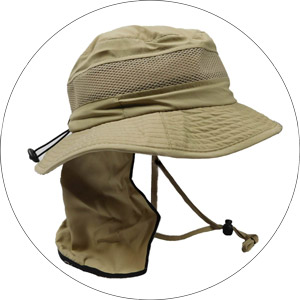

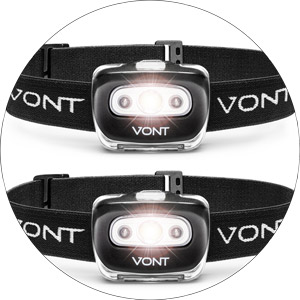

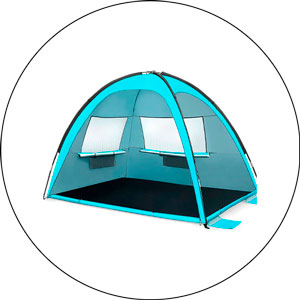

This article beautifully encapsulates the essence of kayak fishing. Whether you’re a seasoned angler or a novice just dipping your toes into the world of fishing, there’s no denying the thrill and joy that comes from a day spent fishing from a kayak.
The affordability and accessibility of kayaks have truly democratized the sport of fishing. I’ve been able to explore quiet, secluded fishing spots that I wouldn’t have been able to reach on a larger boat. Moreover, the low environmental impact of kayaking makes me feel good about preserving the beautiful natural habitats I get to fish in.
Reflecting on the history of kayak fishing, I am genuinely awed by the evolution of this age-old practice. The Arctic tribes that crafted the first kayaks for hunting had no way of knowing how their invention would eventually be embraced by fishing enthusiasts around the world. I am certainly grateful for the advances in technology that have made modern kayaks more durable, affordable, and feature-rich, making the sport more accessible and enjoyable.
The health benefits of kayak fishing have indeed been a boon for me. The full-body workout that I get from each fishing trip keeps me in great shape and helps me unwind. There’s something incredibly relaxing about being out on the water, fully immersed in the pursuit of a catch.
I wholeheartedly agree that choosing the right fishing kayak is paramount for a fulfilling fishing experience. I’ve personally experienced the frustration of fishing in an ill-suited kayak, one that didn’t provide enough stability or storage. Instead of focusing on my fishing, I found myself constantly battling with balance and fussing over misplaced gear.
I can affirm that the right kayak does indeed amplify the joys of fishing. I cherish those peaceful moments on the water, where my kayak feels like a personal haven, comfortably outfitted to my fishing style. The right size and weight make a significant difference in maneuverability and ample storage means I have everything I need right at my fingertips.